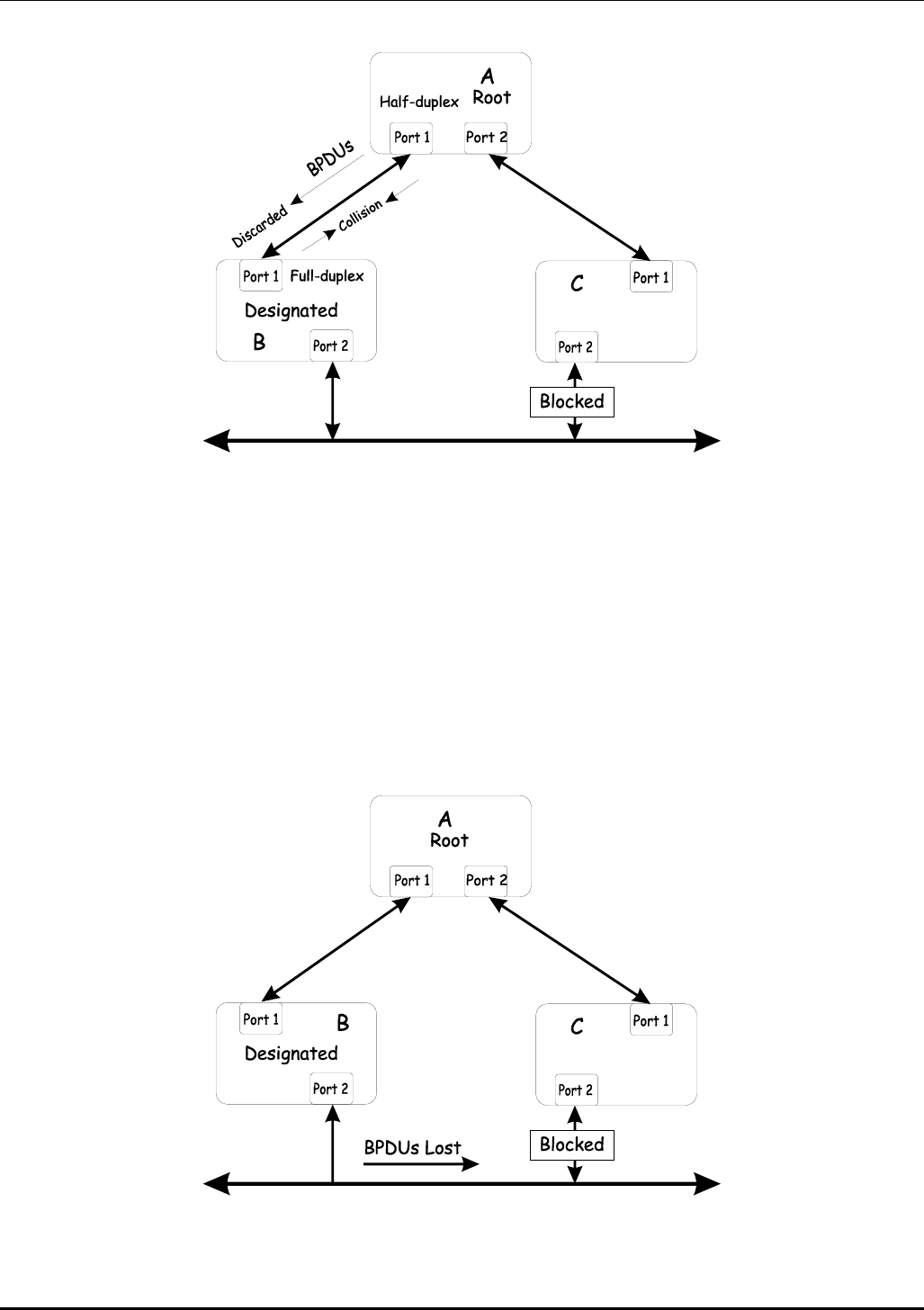
DES-3226 NWay Standalone Fast Ethernet Switch User’s Guide
In the above example, port 1 on B is configured as a full-duplex port and port 1 on A is either
configured as a half-duplex port, or left in auto-negotiation mode. Because port 1 on B is configured as
a full-duplex port, it does not do the carrier sense when accessing the link. B will then start sending
packets even if A is using the link. A will then detect collisions and begin to run the flow control
algorithm. If there is enough traffic between B and A, all packets (including BPDUs) will be dropped. If
the BPDUs sent from A to B are dropped for longer than the MAX AGE, B will lose its connection to the
root (A) and will unblock its connection to C. This will lead to a data loop.
Unidirectional Link
Unidirectional links can be caused by an undetected failure in one side of a fiber cable, or a problem
with a ports transceiver. Any failure that allows a link to remain up while providing one-way
communication is very dangerous for STP.
In this example, port 2 on B can receive but not transmit packets. Port 2 on C should be in the blocking
state, but since it can no longer receive BPDUs from port 2 on B, it will transition to the forwarding
159


















